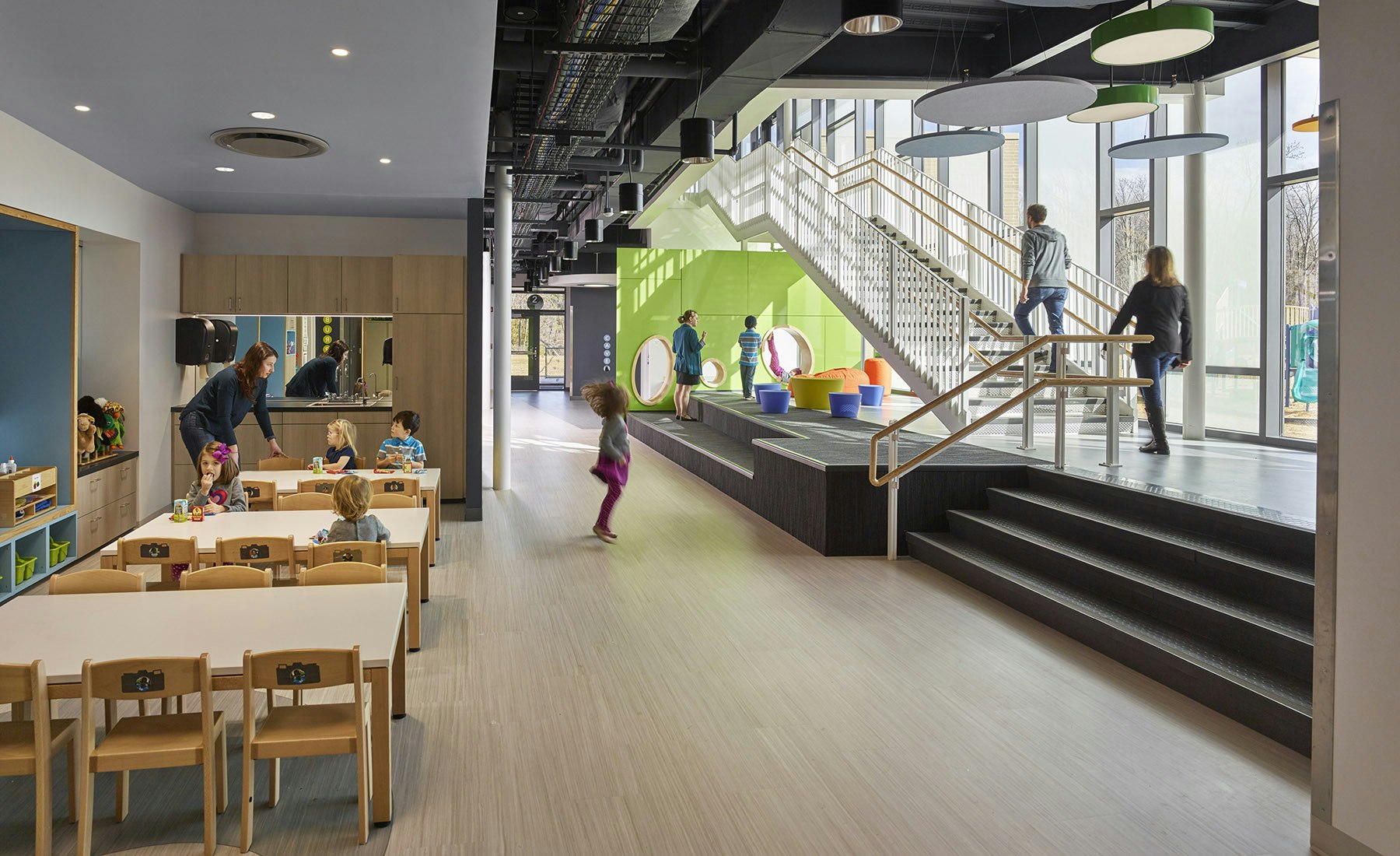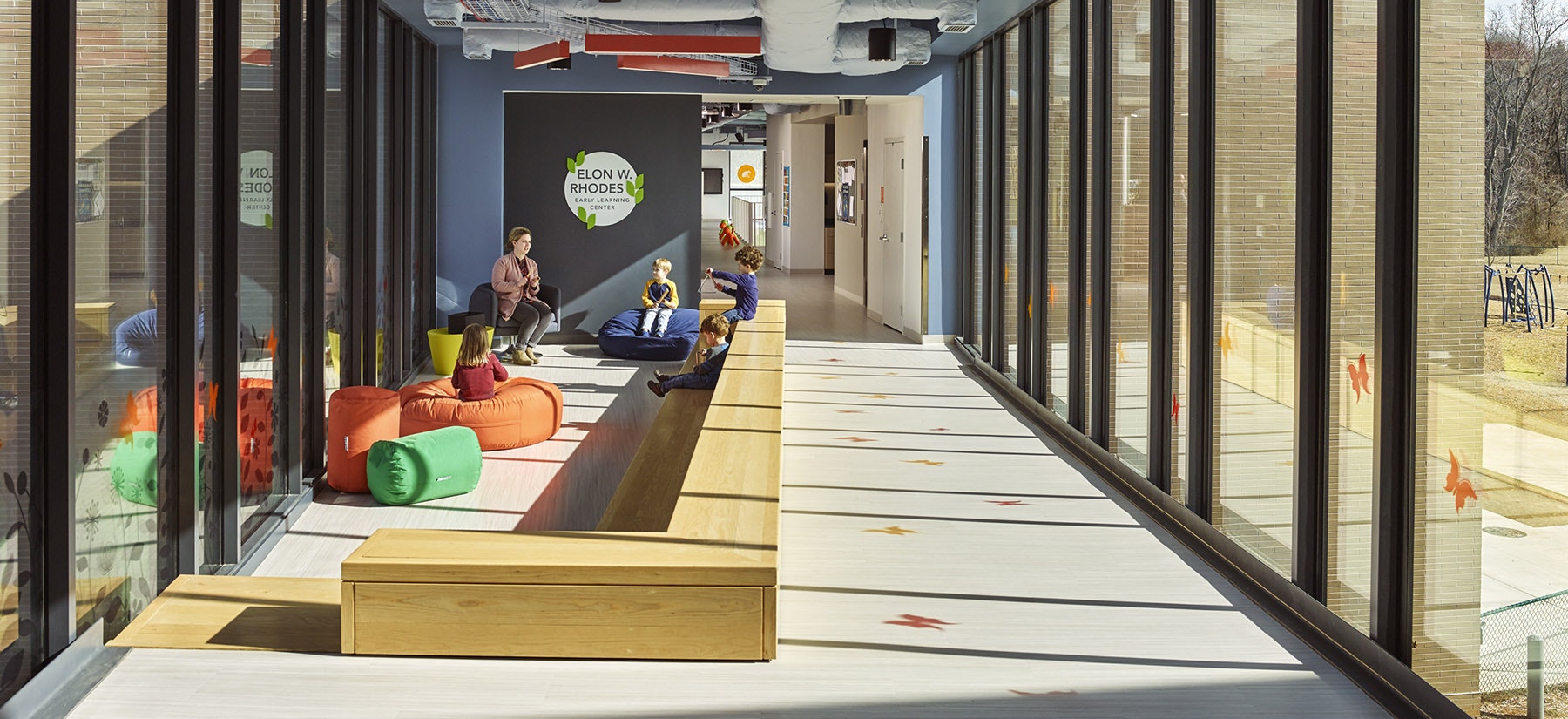Study after study reaches the conclusion that early childhood education has a tremendous impact on life outcomes. Yet only 51% of 3-and-4 year olds in the U.S. are enrolled in full-day pre-primary programs, with no improvement in the last 15 years.
As one of the fastest growing cities and school districts in Virginia, Harrisonburg, between 2002 and 2013, experienced a 32.76% increase in school enrollment and a 21% increase in its city population. The question of how to best provide early childhood learning – through a centralized system or distributed within existing schools – has been posed across Virginia, and particularly in central Virginia, where specific communities have experienced dramatic growth in the number of early learners.
The Elon W. Rhodes Early Learning Center is uniquely designed to facilitate experiential learning as a means to holistically grow social skills, coordination, and sensory development. Measured risk-tasking related to play, touch, sight, taste, smell, and listening are encouraged. With a curriculum based on cognitive development, the Early Learning Center (ELC) encourages curiosity and inquiry in young learners in order to inspire lifelong learning.
As part of district-wide grade realignment, Harrisonburg City Public Schools (HCPS) resolved to consolidate their early learning program into one campus, to create a center dedicated to supporting their youngest learners. With a current capacity of 170 students, the ELC was master-planned to support growth up to 350.
The specific needs and focus of early childhood development demand a different program than one that supports elementary school learners. These needs prompt unique architectural responses that cater to the social, emotional, motor, and sensory development of early learners.
The ELC was designed in response to ongoing research in the field of early childhood learning and through careful study of the Reggio Emilia approach that emphasizes self-directed, experiential learning opportunities in relationship-based settings. Rooted in the principles of respect, responsibility, and community, and paired with measured risk-taking and exploration, this self-directed approach echoes and supports HCPS' literacy vision which encourages: "meaningful tasks that engage students ... in a continual process of constructing meaning through listening, speaking, reading, and writing." In other words, experiential learning is key to fulfilling HCPS' vision.
The 2-story ELC is comprised of learning neighborhoods with studios and support spaces stitched to a central organizing promenade or ‘entourage' space that acts as a community hearth for dining, hands-on learning, art, and gathering.
Community 'entourage 'areas along with hubs for literacy and movement engage circulation outside the learning studios to foster community and diverse active spaces. Paired learning studios encourage community within the ELC and help early learners develop incremental connections to the surrounding school context. Interior environments are designed to foster optimal growth and development opportunities for exploration and learning while offering healthy connections to the outdoors. Play areas and a roof terrace support creative play, active movement and focused inquiry, sand and water play, and opportunities to explore nature.
Client: Harrisonburg City Public Schools
Location: Harrisonburg, VA
Discipline: Early Education
Completion: 2017
Performance: EUI 18 kBTU/sf/year (modeled) | 68% reduction (regional CBECs 2003 K12 School baseline)
Size: 16,000 SF
Key Team Members
Additional Resources
Awards Received
2021 - LEED Gold Certification
USGBC
2020 LEsolution Award for Small / Special Project
Association for Learning Environments
2019 Architecture Merit Award
AIA Virginia
2018 Grand Prize Winner
Learning By Design
2018 Silver Design Award
Virginia School Boards Association
2018 Special Jury Award
Virginia Association for Learning Environments
2018 Honorable Mention Award
AIA Central Virginia



